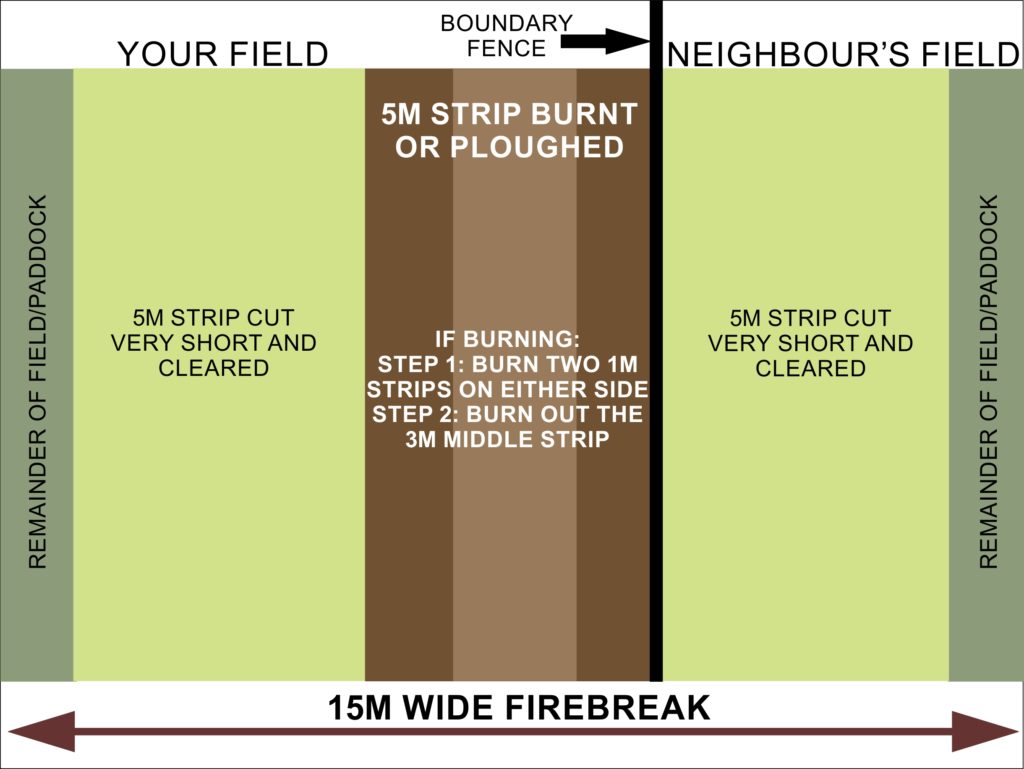This is part two in a five-part series, Preparing for Fire Season. For more, click here.
Fire prevention includes the much-discussed question of firebreaks.
The law requires land occupiers (ie, not just the land owner, but tenants also) to make firebreaks around their property to prevent the spread of fire between their property and neighbouring land.
Size requirements
What constitutes a firebreak depends on a number of factors, not the least important being prevailing wind conditions in your area and the height of the grass adjoining the firebreak.
However, a general rule is that a firebreak in the grasslands of the interior of South Africa should comprise two 5m wide strips of veld that have been mown short to manicured lawn length and cleared of the cuttings, separated by a 5m wide strip in which all the combustible material has been removed.
The full 15m width can be shared between neighbours, ie, they can cut the one 5m strip alongside the fence while you plough or burn 5m immediately the other side of the fence and cut the second 5m strip on your property, or you can each clear a 2,5m strip on each side of the fence, and each cut 5m alongside it.

Removal of the combustible material in this strip can be done mechanically, ie, by ploughing and raking or scraping, or by burning.
Ploughing vs burning
The advantage of a ploughed and raked firebreak is that there is no danger of fire breaking out as the break is made, and you don’t need to inform your neighbour when making your break. The disadvantages of a ploughed break are the fact that you need a tractor and implements, and the cost (fuel for the tractor) and time (labour) to make the break.
Another disadvantage is the weed-like vegetation that will spring up in the disturbed soil of the break in the spring.
The advantage of a burnt break is the speed with which the job can be done, the simplicity of the equipment required (eg, fire beaters, backpack sprayers, hosepipes or motorised sprayers or blowers and labour).
The disadvantage of a burnt break are the fact that you need to choose the right day and time (a windless day, preferably late in the afternoon), and you must liaise with your neighbours to agree on a mutually-suitable date for the job (so that the neighbours can participate on the same day) and the danger of the burning turning into a runaway fire if not properly controlled.
Apart from breaks around the perimeter of your property it is also advisable to have them between individual camps within your property.
Ploughed firebreak
For simple steps on how to make a ploughed firebreak, watch the slideshow below.

